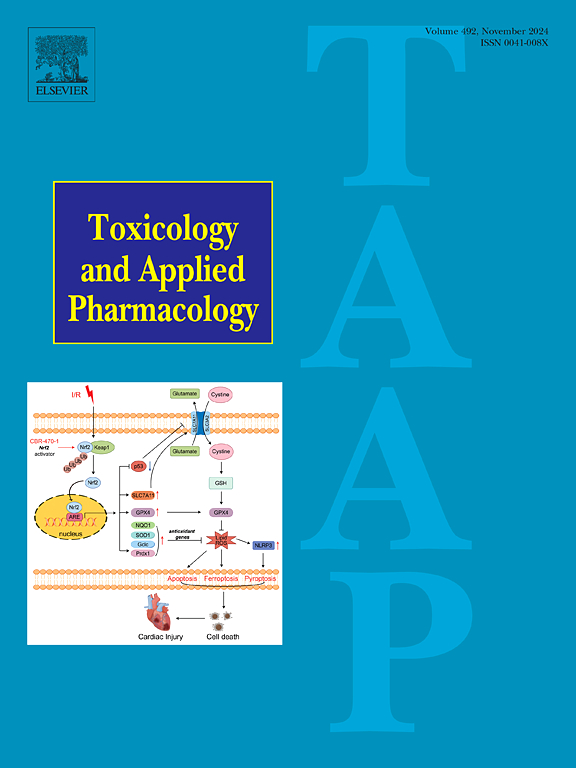机器学习驱动的眼睛刺激毒性预测:集成在硅和体外研究
IF 3.3
3区 医学
Q2 PHARMACOLOGY & PHARMACY
引用次数: 0
摘要
眼睛刺激(EI)毒性对化学品安全评估提出了严峻的挑战,需要替代具有伦理争议的动物试验。我们提出了第一个将计算预测与实验验证相结合的EI评估综合框架。利用5220种具有11个分子指纹和13个分子描述符(MDs)特征的化合物,通过严格的五重交叉验证,六种机器学习(ML)算法生成了252个模型。优化后的模型显示出卓越的预测精度(0.977测试集性能),优于同类方法。实验验证通过体外角膜上皮测定评估模型预测的化合物,基准生物反应证实了预测的可靠性。这种闭环方法建立了伦理化学安全评估的范式,实现了三个关键进步:通过计算-实验协同取代动物试验,通过机器学习优化特征选择提高预测可靠性,通过早期毒性筛选加快发展时间表。经过验证的方法解决了物种间外推的局限性,同时与全球3r(替代、减少、改进)计划保持一致,为化学开发中的下一代风险评估提供了变革潜力。本文章由计算机程序翻译,如有差异,请以英文原文为准。

Machine learning-driven prediction of eye irritation toxicity: Integration of in silico and in vitro study
Eye irritation (EI) toxicity poses critical challenges in chemical safety assessment, demanding alternatives to ethically contentious animal testing. We present the first integrative framework combining computational prediction with experimental validation for EI evaluation. Utilizing 5220 compounds characterized by 11 molecular fingerprints and 13 molecular descriptors (MDs), six machine learning (ML) algorithms generated 252 models through rigorous five-fold cross-validation. The optimized model demonstrated exceptional predictive accuracy (0.977 test-set performance), surpassing comparable approaches. Experimental validation assessed model-predicted compounds through in vitro corneal epithelial assays, with benchmarked biological responses confirming prediction reliability. This closed-loop methodology establishes a paradigm for ethical chemical safety assessment, achieving three critical advancements: replacement of animal testing through computational-experimental synergy, enhanced prediction reliability via machine learning-optimized feature selection, and accelerated developmental timelines through early-stage toxicity screening. The validated approach addresses interspecies extrapolation limitations while aligning with global 3Rs (Replacement, Reduction, Refinement) initiatives, offering transformative potential for next-generation risk assessment in chemical development.
求助全文
通过发布文献求助,成功后即可免费获取论文全文。
去求助
来源期刊
CiteScore
6.80
自引率
2.60%
发文量
309
审稿时长
32 days
期刊介绍:
Toxicology and Applied Pharmacology publishes original scientific research of relevance to animals or humans pertaining to the action of chemicals, drugs, or chemically-defined natural products.
Regular articles address mechanistic approaches to physiological, pharmacologic, biochemical, cellular, or molecular understanding of toxicologic/pathologic lesions and to methods used to describe these responses. Safety Science articles address outstanding state-of-the-art preclinical and human translational characterization of drug and chemical safety employing cutting-edge science. Highly significant Regulatory Safety Science articles will also be considered in this category. Papers concerned with alternatives to the use of experimental animals are encouraged.
Short articles report on high impact studies of broad interest to readers of TAAP that would benefit from rapid publication. These articles should contain no more than a combined total of four figures and tables. Authors should include in their cover letter the justification for consideration of their manuscript as a short article.

 求助内容:
求助内容: 应助结果提醒方式:
应助结果提醒方式:


